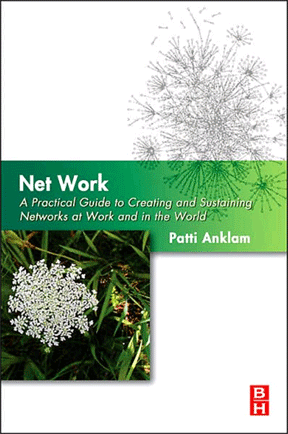The use of social media in the enterprise is, of course the playing field articulated by Andrew McAfee as Enterprise 2.0, first in his seminal article and then in his great book. He nicely captured the adoption of web 2.0 tools within the bounds of organizations. I think of the trajectory from the introduction of the tools on the web to the current state as follows:
I think of social media as both:
- Web-based technologies that shift focus from content to conversation, from publishing to interacting, and
- Technologies and practices embedded in a web of relationships
This trajectory suggests, I hope, the reality of Clay Shirky‘s comment:
One consistently surprising aspect of social software is that it is impossible to predict in advance all of the social dynamics it will create.
He was speaking of the changes in models for interaction and community that he describes in Here Comes Everybody, but I think this is also true of the changes in business dynamics. These have been nicely captured — in the flow, as it were, by Stowe Boyd, who is convening Social Business Edge: Operating Manual for 21st Century Business in New York City next Monday. I’m excited about the event, and will be writing about it.
So what does it mean, exactly, that companies are adopting “web 2.0 practices?” There are some interesting answers from recent market research by Information Architected (Carl Frappaolo and Dan Keldsen) for the 2.0 Adoption Council. Responding to the question, “What are the business drivers behind your Enterprise 2.0 initiative?” the top five answers were:
- Connecting colleagues across teams and geographies
- Enabling access to subject experts
- Increasing productivity
- Capturing and retaining institutional knowledge
- Fostering innovation
If you have been around the knowledge management community for more than five years, these should all resonate with you as some of the key value propositions for knowledge management initiatives. This shouldn’t be a surprise. Knowledge management people have always been quick to try out and integrate emerging technologies into their practice. I would not be surprised if many members of the 2.0 Adoption Council (which won’t let me in, hélas, because I’m a mere consultant) have roots in KM. This would, of course, be the 1st KM: Big KM.
But this 3rd SM is altering the face of knowledge management. I’ve written before about the evolution of KM, including this framework:
And so here we are, where the twist is that social media have, in fact, provided the conditions for enabling action, but this has come about with a focus that I did foresee when I first created this chart in 2005. That is, the locus of knowledge is not just in the network, it’s in the conversations in the network. Content is no longer king. Social media has made it all about conversations.





As a complement to that article and book, here’s a good whitepaper on the subject of blocking social media apps on the Enterprise network. It’s called “To Block or Not. Is that the question?”
http://bit.ly/9f8WOT
It has lots of insightful and useful information about identifying and controlling Enterprise 2.0 apps (Facebook, Twitter, Skype, SharePoint, etc.)
Pingback: Teadmusjuhtimise kolm põlvkonda @ Erinevad signaalid
Pingback: 3 KMs and 4 SMs — Mathemagenic